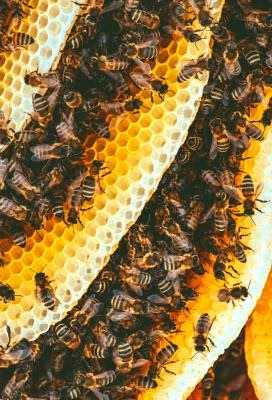How should I choose honey? Worried about buying fake honey? What should I do if I suddenly notice crystallization while using it? Is it still safe to eat? How should honey be stored and used properly? Here are five frequently asked questions about choosing and using honey.
Q1: Does a darker honey color indicate better quality?
There are many different types of honey on the market. Honey is primarily amber in color. However, you may find that some honey is darker in color, while others are lighter. This is due to differences in honey type and source. Common types on the market include longan honey, lychee honey, and multi-flower honey.
Judging honey’s quality or nutritional value by its color is incorrect. For example, longan honey naturally appears amber, while lychee honey is lighter. Each type of honey has its own unique characteristics. Therefore, a darker color does not necessarily mean better flavor or nutritional value.
Q2: Does crystallized honey mean it’s spoiled? Can I eat it?
When the weather turns cold or the temperature is low, you may notice honey suddenly solidifying into “crystallization.” Crystallization doesn’t mean honey has gone bad. Honey is primarily composed of glucose and fructose, which form when exposed to suitable conditions like low temperatures and low moisture.
Impurities in the honey, such as small particles and pollen, act as crystal nuclei, onto which glucose adheres, causing crystallization.
Crystallization isn’t necessarily associated with a specific type of honey; it also depends on the storage conditions and the glucose content of the honey. However, synthetic honey, such as those made with fructose syrup, doesn’t crystallize due to its low glucose content. Therefore, crystallization can be identified as genuine honey.
If honey crystallizes, simply melt the crystals in a water bath at around 50°C, restoring the honey to its liquid state.
It’s also recommended to avoid using overly hot or boiling water to melt the honey, as this can deplete the honey’s enzymes and other nutrients, as well as its flavor.
Q3: How should I choose honey?
When choosing honey, consumers can look for its appearance, taste, and whether it has a certification mark or label.
- Appearance: Pure honey is relatively opaque and thick. According to the CNS standard for honey water content, honey with a water content of less than 20% flows more slowly. Fake honey, due to blending or a higher water content, may appear more translucent and thinner, and may also flow more quickly.
- Smell: Real honey has a natural floral aroma. Fake honey may have a stronger or unnatural flavor due to the addition of high-fructose syrup, chemical flavors, and spices.
- Certification mark or inspection certificate: Honey must meet CNS national standards and pass inspection and certification to provide greater assurance of quality and authenticity. Honey with relevant inspection certificates for pesticide and antibiotic residues provides added peace of mind.
- Product labeling: Complete labeling should include information on the product’s origin, expiration date, and nutritional information.
- Choose reputable and trustworthy brands and sources.
Q4: How can I tell real honey from fake? You can also use the brewing method.
In addition to the aforementioned methods for selecting honey, there’s another way to determine its authenticity: dilute the honey with water and observe. After adding water, shake the bottle evenly. Real honey, because it contains protein, will form a foamy surface that lasts for a long time. However, with fake honey, the foam will dissipate quickly and be less abundant.
Officially, the authenticity of honey is verified using specialized equipment to thoroughly examine its fructose composition, enzymes, and pollen content.
Q5: Can honey not be scooped with a metal spoon or stored in a metal container? How should honey be stored?
Honey is slightly acidic. Using metal tools, such as iron spoons, or storing it in metal containers can cause the honey to react with the metal, causing it to darken. Over time, the nutrients may be reduced or altered. Therefore, it’s better to use wooden spoons or glassware for storage and handling.
It’s recommended that honey be tightly sealed and stored in a cool, dry place.


Leave a Reply